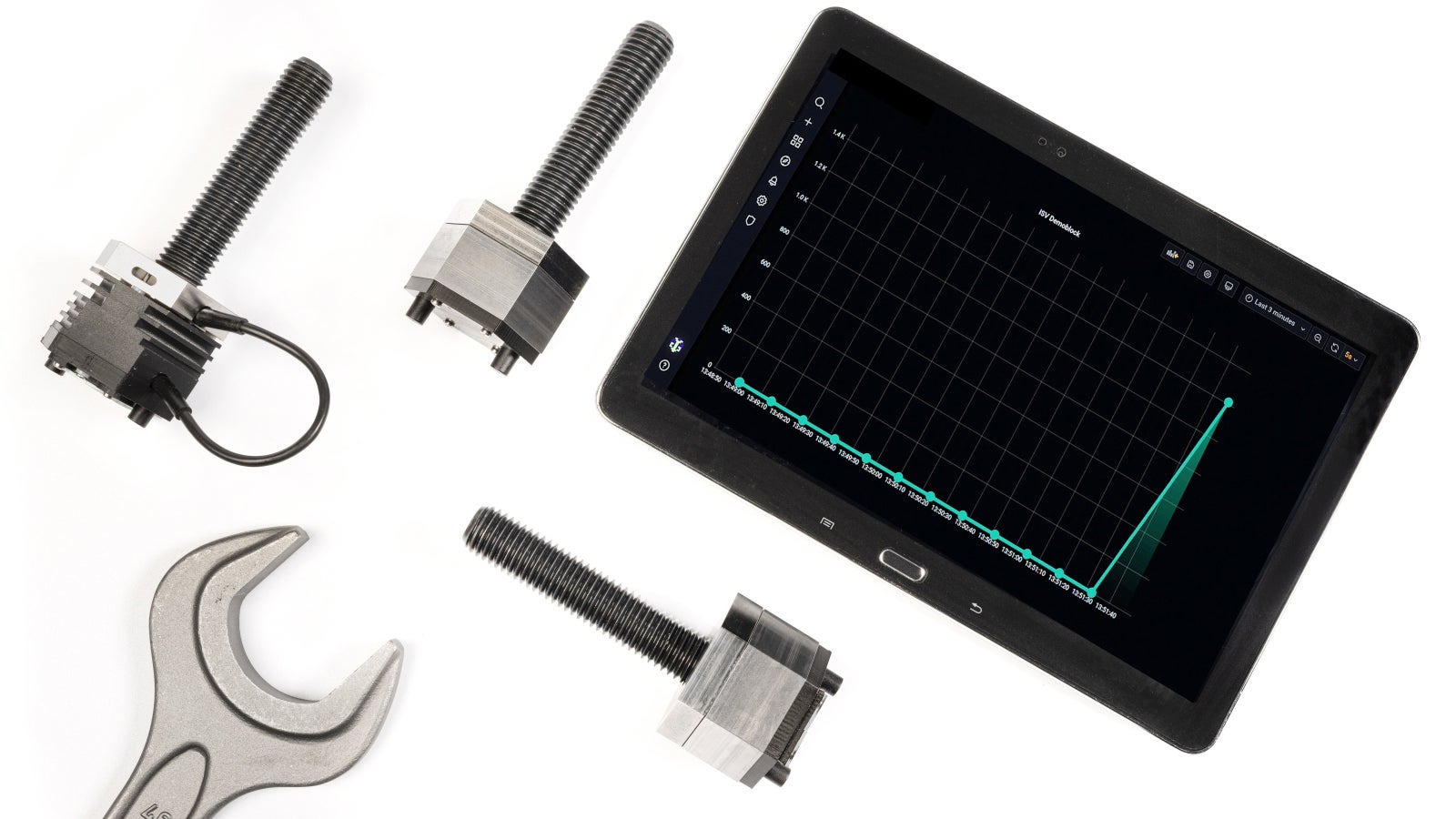Working to reduce the need for regular inspections of large structures, researchers from the Fraunhofer Cluster of Excellence Cognitive Internet Technologies CCIT have created a smart self-powered screw that leverages IoT tricks to automatically send out alerts when it detects that it’s become looser than it was on the day it was installed.
It doesn’t matter how much you tighten a screw at first installation, when it comes to structures like bridges, wind turbines, cranes, scaffolding, and even roller coasters, all of which are subject to subtle movements and repeated temperature fluctuations, there’s always the risk a screw will gradually loosen. As a result, regular inspections are needed to ensure screws and other components are not showing signs of wear, loosening, or becoming completely undone.
Amusement parks employ teams of people who climb and inspect towering roller coasters every morning to make sure nothing’s come loose. It’s an expensive precaution designed to ensure tragedies never occur, but unfortunately one that’s not always properly budgeted for, as the failing state of bridges around the country are proof of. It wasn’t the cause of the bridge that collapsed in Pittsburgh earlier this year, but that accident is proof that regular monitoring of a structure’s safety is important. However, what if these structures could monitor themselves?

The Smart Screw Connection, as the hardware is called, comes with a pre-attached washer containing a thin film of piezoresistive material that creates an electrical resistance when a mechanical force is applied. In this case, when the screw is tightened, sensors in the head measure the preload force at three different points, and over time, if the screw comes loose, resulting in less pressure being applied to the film, the change in electrical resistance can be detected and used to trigger a warning signal.
The head of the screw also contains a radio module that can send a wireless signal to a base station that could be located at the bottom of a wind turbine, for example, or several kilometers away, as the MIoTy wireless protocol being used is capable of sending small amounts of data over large distances. One base station could keep tabs on over 100,000 smart screws, and could easily share the data it collects over the internet, meaning anyone on Earth could monitor the status of a structure without requiring someone to regularly visit and check the tightness of every single screw installed. That not only reduces maintenance costs, but allows problems to be addressed as soon as they’re detected.
But smart devices require power, and no one wants to build an entire bridge with screws that will one day require a battery swap. So in this instance, the researchers have turned to energy harvesting, specifically, the thermoelectric effect. This would allow temperature differences between the screw head and the environment around it to generate enough electricity to keep it indefinitely powered. It’s the same principle that powers electronic devices like the Matrix PowerWatch, so it’s proven technology. But in this case, instead of just telling time and counting burned calories, the technology would be used in a life-saving way to ensure that critical infrastructures always remain safe to use.
